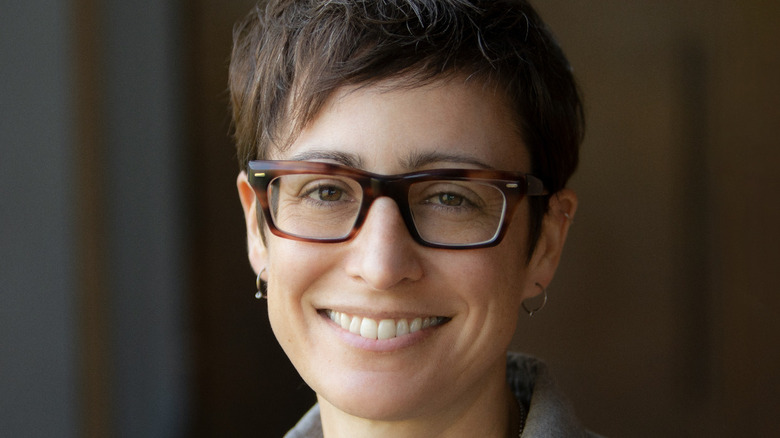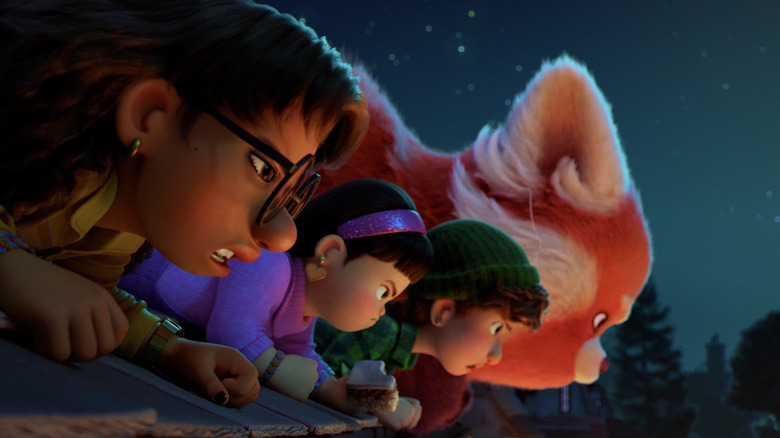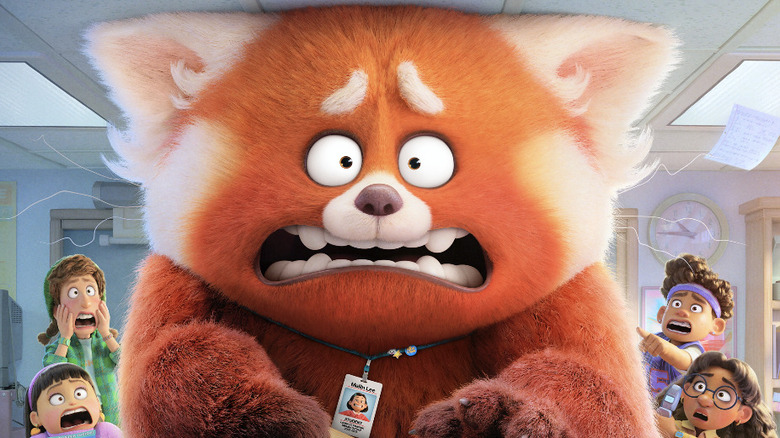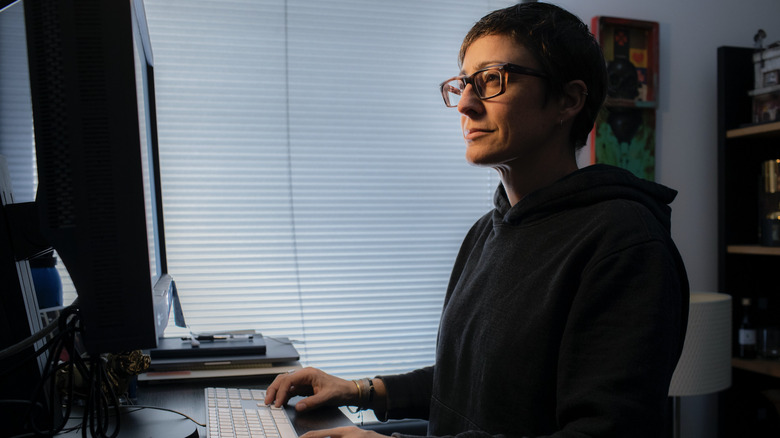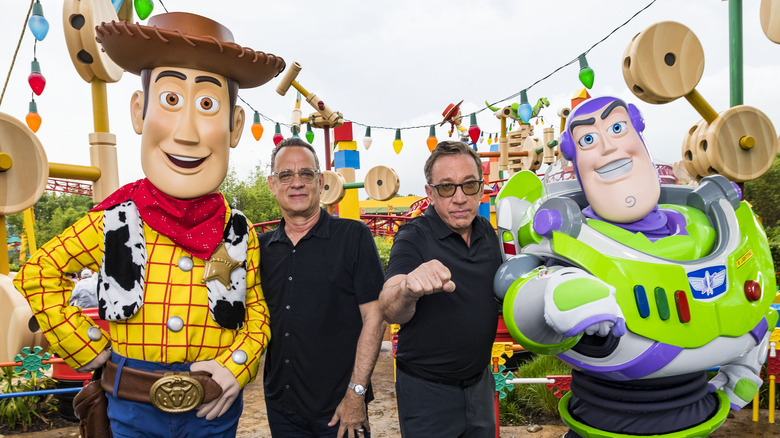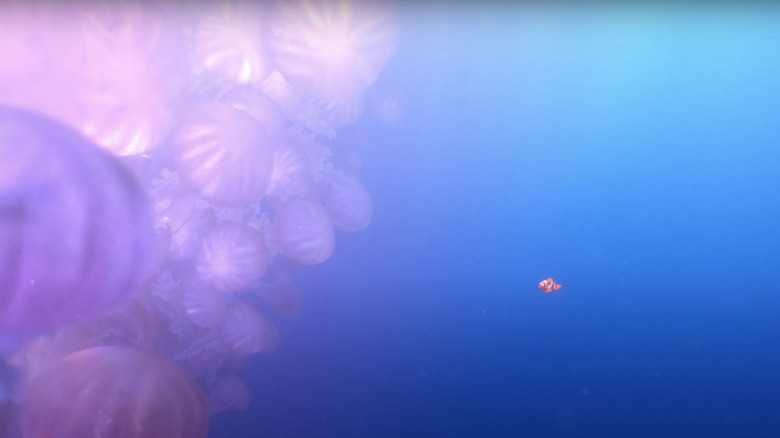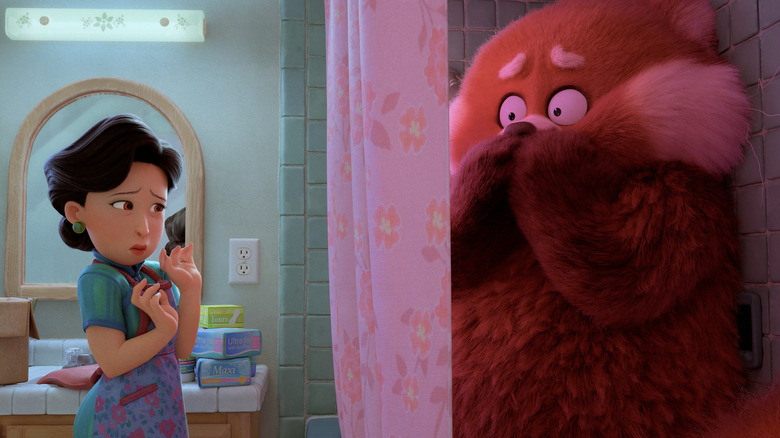Turning Red Visual Effects Supervisor Danielle Feinberg On Her Amazing Pixar Career - Exclusive Interview
Danielle Feinberg's career at Pixar is the stuff of legends. Feinberg has basically been involved in all of our favorite Pixar films, from her early work as a lighting technician on 1998's "A Bug's Life" to her master lighting artist role on 1999's "Toy Story 2," eventually becoming director of photography on 2017's "Coco." Having also worked on "Finding Nemo," "Cars," "WALL-E," and "Inside Out," to name but a few of her projects to date, Feinberg has helped to create many of Pixar's most enduring movies. Now, Feinberg's work is back on our screens again in "Turning Red."
Disney and Pixar's "Turning Red" follows Mei Lee, a 13-year-old torn between her life as an awkward teenager and her relationship with her overbearing mother. As if life wasn't hard enough, Mei magically turns into a giant red panda whenever she gets overexcited, which, unfortunately for her, is all too often. Thanks to beautiful '90s-inspired artwork, an irresistible boy band, and a crew of die hard besties, you'll be glued to Mei's story.
Looper caught up with Danielle Feinberg, the visual effects supervisor on "Turning Red," to find out how Disney and Pixar's latest project came to life, and what it was like working on "Finding Nemo," "Coco," and "Toy Story 2."
Turning Red's '90s-inspired look
"Turning Red" has such a unique look, with its pastel colors and 90's-inspired scenery. How did you develop the style and the color palette?
It was really cool because [production designer] Rona [Liu] was really into having this very orchestrated color. I'm such a color nerd that I was like, "This is so fun," and I've watched so many Wes Anderson films and love how particular every scene is with color. It was really cool to be a part of that, and Rona — really, her and her group, they spent a lot of time thinking about each location and what were the colors that best served the story and what was each character's color palette and sticking with that. What did it mean? Being a color nerd, that's super fun for me, and I loved that it gives a different feeling and also a freedom of ... Something doesn't have to be the color it is in real life. You can tweak that to fit this orchestrated color, so it was really cool.
Studying red panda behavior
You studied red panda behavior for this film. How crucial was that bringing the main character to life?
I think it was really important ... We always start with real life as the base and then decide where we want to push and pull things so that you're in animation and you can get the expressiveness you need, or the acting that you need, but always based on real life, because then it's more believable, the motion. The fun example that [animation supervisors] Patty [Kihm] and Aaron [Hartline] talked about is, when red pandas are scared, they put their arms up, and then folding that into the [animated] panda the whole way. A real life red panda is not eight feet tall. It is not "chunky cute" in the same way. It's not making a cat-shaped mouth or a bean-shaped mouth, so we have all kinds of artistic license, but seeing how they move, they're this very tube-like shape and they're very agile.
Panda Mei is scrambling up this building and running across rooftops and stuff, and so all of those pieces together where it's all of our worlds [together] really, there's some elements based on real life. There's a believability for the audience, but then all of our artistic license on top of that.
Exploring new technology
You used some new technology for "Turning Red." In what ways were you pushing the envelope doing something different?
I think in terms of specifically technology, it was really the profile movers for Panda Mei, where we were starting to see what [director] Domee [Shi] wanted out of the character — these different mouth shapes that they were drawing, the cat mouth, the bean mouth, the tiny, the huge. Our head of our character's department had just come on and he was like, "I don't know how we're going to do that. That's really hard for us." It's not to say we couldn't have done it with our traditional tools. We probably could have done it, but I don't know that it would've looked as good. I don't know if it would've been as easy for the animators to use. We probably would've taken time away from other things to do it. I had seen this profile movers thing, which was a guy who's been here for a lot of years doing articulation, Bill Sheffler. He had an idea how to do it better. He talked to a couple people in our R&D department. They start working on it.
I saw this presentation and in the early 2000s, I did a little bit of articulation on "Monsters Inc." With that little bit of knowledge, I looked at that and I was like, "That is a way better way to do it. It's so much more the artistic way of doing it." It was unproven technology and this is the first time I'm doing this job. I'm seen as more of a creative person here because I've been in lighting so long. People have forgotten I have a computer science degree, so there was extra pressure on that decision, I think, in terms of, "Does she know what she's doing?"
It was really fun. It was obvious to me that it was going to be much clearer, thinking about the profiles of the shape of the character or the shape of the mouth with a line that then, the computer is solving to hit that shape rather than a human having to move points around. It totally worked out and it made it so Panda Mei was really — she could be so expressive and the animators, they weren't suffering to get there.
Working on Toy Story 2
Your career at Pixar has been incredible and you've worked on some of the studio's biggest movies. What it was like working on "Toy Story 2," and getting to work with Tom Hanks and some of the other cast members?
That was a crazy time. It was, we'd made, at that point, we had made the first "Toy Story," which I didn't. I came in after that was done. I worked on "A Bug's Life," [that] was my first film. Then it's like, "Okay, we're going to make a third film." There was all this pressure because if you didn't make a good film, that was it. You were going out of business. We were this tiny little company, and that one, getting to work on ... "Toy Story" is one of the things that inspired me to go into computer animation, and getting to work on the sequel to that was amazing. Yeah, that was a pretty magical time, actually. We worked so hard on that movie. I have never worked more overtime than I did on that movie, but it's some of the sweetest, fondest memories I have of my work here.
Lighting Finding Nemo's jellyfish
Do you have any standout moments from your career so far? Is there a particular movie you look back on and you think that was a real turning point?
Probably, there's several. I think one of the big ones was on "Finding Nemo." I lit the jellyfish sequence and that sequence had not — the director was not happy with that for a long time, and then there was the day I showed it in the lighting review and he was speechless, which was really scary because I thought it meant he hated it. Then he just started clapping, and I was like, "Oh, oh." It had been such a disaster up until that point. That was Andrew Stanton. Then, when he went to make "WALL-E," he asked me to be his lighting D.P. I'm sure it's all because of the jelly — some part of me is like, "It's because of the jellyfish." There's these little moments like, "Oh, that was so fun." It actually spurred that, a whole part of my career, I think in a way.
What was it like working on "Coco"?
"Coco" was awesome. I think it was one of those fun ones where every set we got, I was like, "Oh, I can't wait to light this. This is so fun." Getting to represent Mexico and this beautiful holiday and culture at that time when there was some anti-Mexico sentiment, it felt like, "Yeah, right on." It's like, with "Turning Red," you're getting to represent people on the screen that are not necessarily represented very often. To me, that's the icing on the cake of making these movies is getting to not only put a good movie out in the world, but getting to represent different people up on screen is ... That's the best.
Pixar's unique vision
I also love "Ratatouille" because it's so unusual. Not everybody wanted to see rats in a kitchen. How did you make that, and how did you give the film its individual look?
Sharon Calahan directed the lighting on that and she is a brilliant, brilliant mind and lighting person, but a visual person. She had this real goal on that film because it was about food, to make you want to eat the food. Food can be very hard in the computer to make it look good, and all her efforts went into making the food delicious in that she felt like that would help sell that film. That's her genius brain child, I think, in a lot of ways ... She turned some of the computer graphics things we had been doing on its head for that film and did a lot of really cool looks. I got to light a little bit on that film and it was like, "Ooh, this is so cool." It's one of those moments where things are going here and you're getting better and better. It went like this and the capabilities, [in terms of looks], really opened up. It was really cool.
What was it like working with the voice talent on "Turning Red," which includes Sandra Oh? Did you get any interaction with the cast?
Because of the pandemic, a lot of the recording happened in people's closets, some of it. It was crazy. We didn't get to see people as much. I saw Sandra Oh walking by and I was like, "Ooh, she's so great," but mostly a lot of the recording was done where nobody got to see them. People were off in their own little pandemic world.
"Turning Red" premieres exclusively on Disney+ on March 11, 2022.
